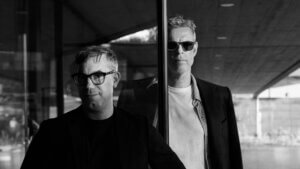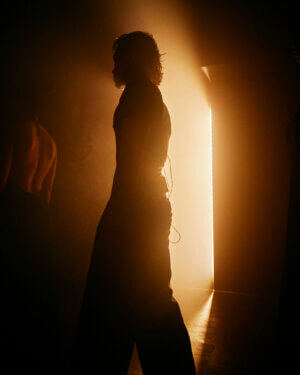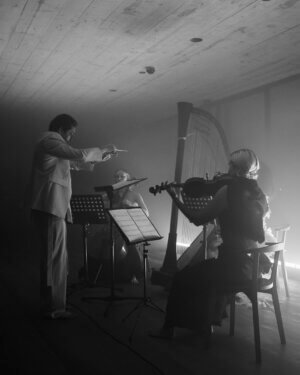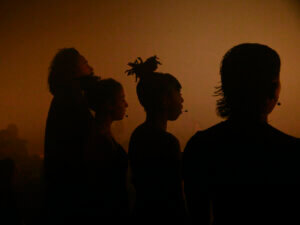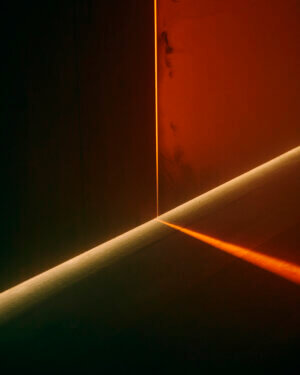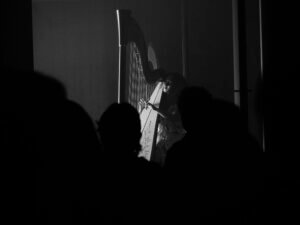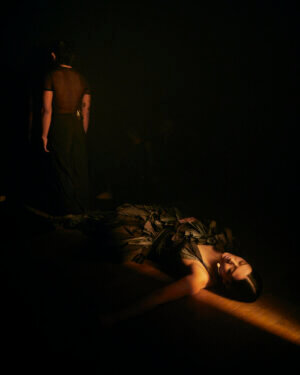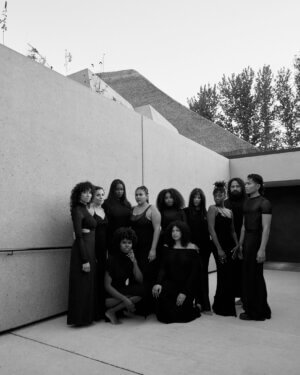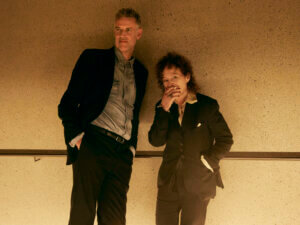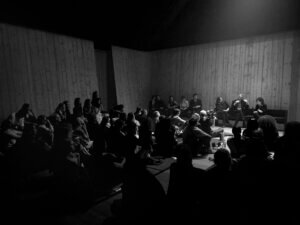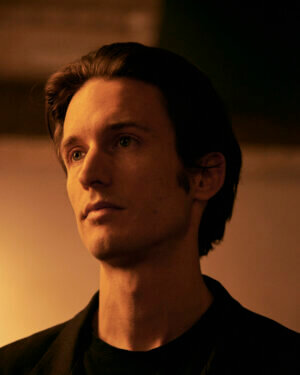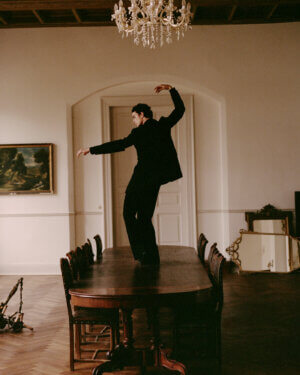While Stephan Crasneanscki and Simone Merli form the brilliant core of Soundwalk Collective, their expansive sonic arts practice engages a rotating constellation of contemporary artists, like Patti Smith and Nan Goldin, as well as anthropological and literary themes that invite audiences to listen differently and more deeply to their environment and inner worlds.
The unforgettable opening night of “Transmissions” at the Reethaus was a testament to their kaleidoscopic vision. Within the cloistered inner room, the duo invited Berlin-based choir A Song For You and soloist Mulay to lend their voices and graceful movement to the first-ever live performance of the film score to “All the Beauty and the Bloodshed,” documenting the life, art and activism of Nan Goldin. Weaving between the audience and illuminated by beams of light, the choir sang poem fragments by German Romantic Friedrich Hölderlin, written after he was sent away to an asylum. Doors opened and shut at intervals around the monastic space, revealing sonic interludes performed live on harp, cello and violin.
While just one example of their decades-long collaboration, the immersive program embodied the emotional potential of their multidisciplinary approach – an operatic rendition of a film score, a soundtrack made into a Gesamtkunstwerk. Looking forward, the duo is excited to witness how pioneering works that have inspired their practice come alive within the walls of the Reethaus – and how the guest artists they invite, from Pan Daijing to Jana Winderen to Lyra Pramuk, take inspiration from the space to create something unique.
